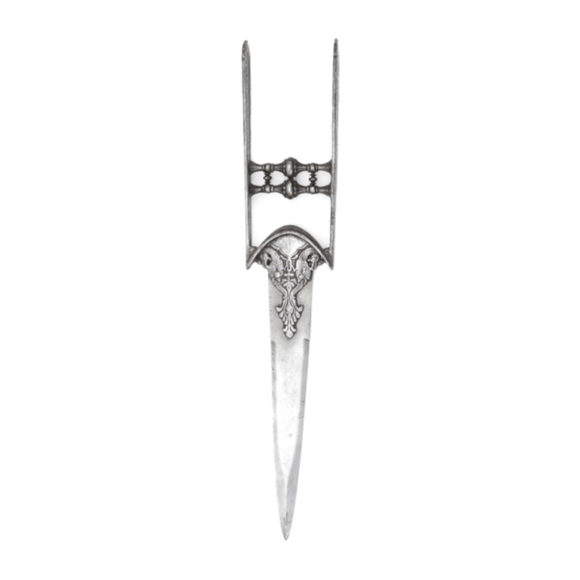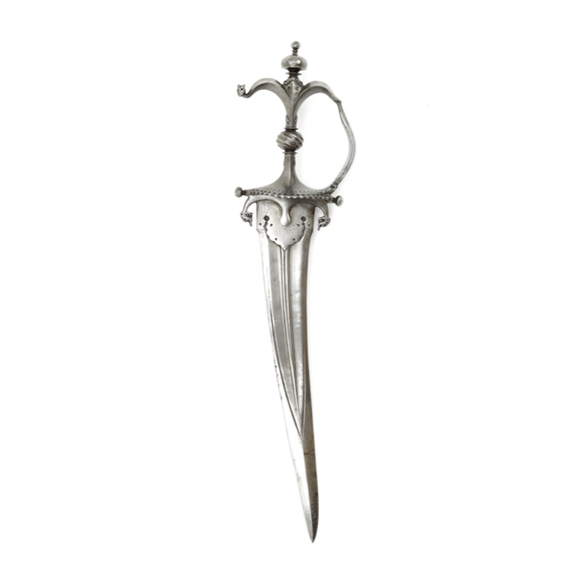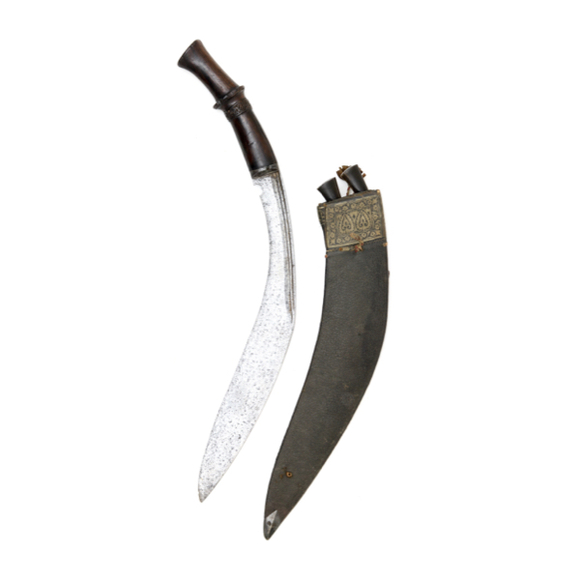Of a style often associated with Tanjore, the seat of the Vijayanagara empire.

86.8 cm
68.5 cm
Ahead of langets 3.3 mm
Tip 1.5 mm
Bade 51 mm
Middle 47 mm
Tip 8.2 mm
1241 grams
16 cm
from hilt side of guard
Iron, steel, brass
South India
16th-17th century
Philip Tom, L.A.
Description
A very good and rare South Indian sword with a large, double-edged blade with a wide, cobra-shaped tip. The blade has a subtle central ridge and secondary edge bevels.
The massive hilt has a double-lobed guard that is a predecessor of the typical khanda hilt of later times. Two long, very thick langets with scalloped edges that support the base of the blade. At the end of them are two peculiar protrusions on either side. The blade is held firmly by two large rivets. The rim of the guards is about 5 mm thick, and at the base, the reinforces are an impressive 13.5 mm of solid metal. The cylindrical grip ends in a drum-shaped pommel built from layers of brass discs. At the back are six vanes.
Comparable examples
Similar swords are in the National Museum in Liverpool, and the British Museum, accession number 293374 and Metropolitan Museum, accession number 36.25.1581. All were published in Elgood's Hindu Arms and Ritual, who acknowledges the great difficulty these pose in terms of dating.
Robert Elgood; Hindu Arms and Ritual
Eburon Academic Publishers, 2004
Pages 81-82
The late Roy Elvis published three more in his book The Hindu Warrior. He attributes them to the Vijayanagara Empire of the 14th-15th century. All have comparable pommel, langets, and corba-shaped tips to our example.
Roy Elvis; The Hindu Warrior
Roy Francis Elvis 2020
Pages 104-106
Of these six, the one offered here is, by far, in the best condition.
Condition
Minor restoration to pommel. Blade in very good condition for age, with stable patina but no active rust or excessive pitting. It has some openings in the laminations, often seen on old South Indian blades. Blade has never been over-cleaned, a rarity among the genre, and retains its original edge contours.
Conclusion
Most swords of this form are revival-era temple swords, made for and used in Hindu rituals. Here is a rare example of an excellently preserved early Indian military sword. The jury is still out on the exact dating, but as a type, these fell out of use by the 17th century and so it is probably 17th century or earlier.

















With a very fine Nepalese blade, but kard-like hilt and scabbard.
Early type with very shallow notch in the blade and little flare in the pommel.






